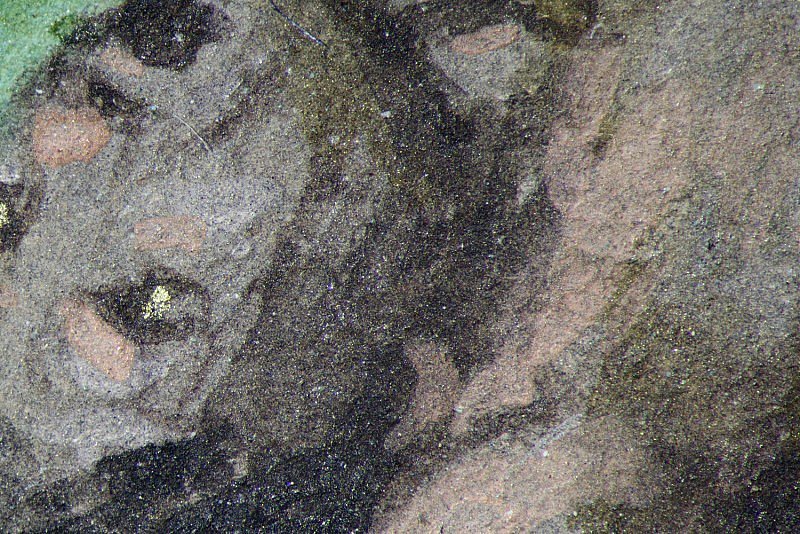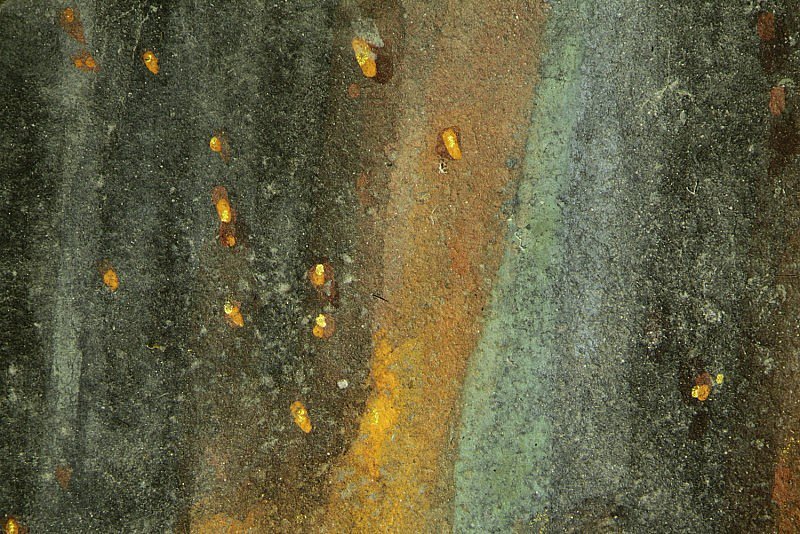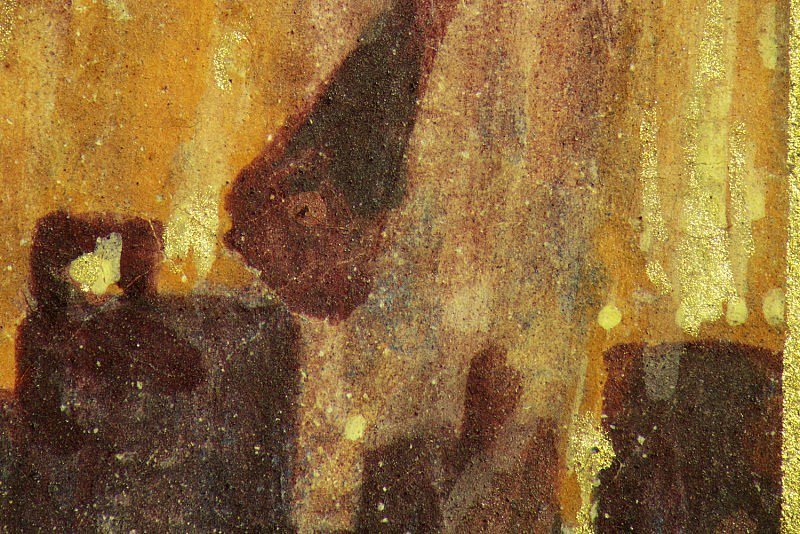Painting the flesh
Artists' Techniques
Bening painted flesh tones with complex mixtures, intentionally varied to suit the character and specific situation of the individuals depicted. In line with 16th-century practices, he used flesh tones to suggest the protagonists’ temperament – choleric in the case of the bad thief (MS 294a), melancholic in the case of the Damned (MS 294d). Bening also varied his treatment of flesh tones to distinguish between the living and the dead. The two Crucifixion scenes (MSS 294a, 3-1996) provide a study in ‘life colour.’



Last Judgement
On a bright, green hillside, Saint Peter welcomes the Saved into Paradise, while the Damned, writhing in a pit of darkness, are consigned to Hell (hotspot 1). A most sophisticated palette was employed for the depiction of Hell. The central part of the miniature combines red lead, indigo, azurite, lead white, most likely a mineral copper green, and probably carbon black, lead-tin yellow and yellow ochre, accentuated with sparks of shell gold (hotspot 2). The flames in the side borders also contain an organic red yielding a deep pink colour, while lead-tin yellow provides the bright flashes of demonic, infernal light (hotspot 3). The Damned are represented as melancholics - their dark, grey-brown skin burnt by the fires of Hell contrasts with the flesh of the Saved who are painted in naturalistic tints. In the lower border, an energetic troop of angels, clad in white and wielding swords, prevents the Damned, including high-ranking ecclesiastics, from escaping their fate. These figures derive from Albrecht Dürer’s Apocalypse-inspired woodcut, The Massacre by the Four Angels, made c. 1498.